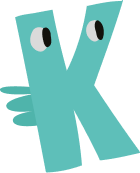What is Frenectomy?
Frenectomy, derived from the Latin word "frenulum," refers to the surgical removal or alteration of a frenulum, which is a small fold of tissue that anchors or limits the movement of a body part, typically found under the tongue or upper lip.
Distinguishing Short Tongue Frenulum
The lingual frenulum is a band of tissue that connects the tongue to the bottom of the mouth, and a short or thick frenulum can lead to various issues. A short and thick lingual frenulum can restrict tongue movements. In severe cases, the tongue may be entirely stuck to the floor of the mouth, while in milder cases, it may not cause any trouble or restriction. Lingual frenulum can sometimes recede to normal size during the transition from infancy to childhood.
In newborns, an undeveloped ability to move the tongue due to a short lingual frenulum can lead to feeding problems. As the child grows older, it can result in speech disorders, orthodontic problems, spacing between the lower front teeth, and gum problems.
Diagnosis of a Short Tongue Frenulum
In cases of a short or thick lingual frenulum, restricted tongue movement is often observed, and when the tongue is extended, its tip may form a "heart" or "v" shape. In more severe cases, the tongue may not be able to be raised towards the palate, protruded beyond the lips, or reach the lips. In daily life, this limitation can be evident, for instance, in a child's inability to lick an ice cream cone.
During an examination, restricted tongue movement is considered, speech is evaluated, and certain letters are checked. The letters "s" and "r" are usually the most difficult to pronounce.
In newborns, the structure of the mouth and tongue is examined.
Distinguishing Short Lip Frenulum
The labial frenulum appears as a thick band between the upper front teeth in children. Sometimes, children may be reluctant to touch this area with a toothbrush.
What is Frenectomy Treatment?
The primary reason for treating a short lingual frenulum is speech disorders caused by restricted movement.
Treatment for a short lingual frenulum involves surgically cutting the frenulum or removing the tissue with a laser.
In laser treatment for the tongue and lip frenulum, tissue can be removed painlessly and without bleeding using only topical anesthesia, and stitches are not required after the procedure. Laser treatment is more comfortable than traditional methods, with less pain and fewer complications during and after treatment. Healing also occurs more rapidly compared to traditional methods. Typically, the ability to speak and pronounce letters correctly improves spontaneously during the healing process. During the recovery period, tongue exercises practiced with the patient before the procedure should be continued, and if necessary, a speech therapist should be consulted.
Timing of Frenectomy Treatment
Once a short, thick, or adherent lingual frenulum is identified, it is recommended to remove it as soon as possible to prevent or mitigate structural changes in the tongue, feeding and swallowing problems, dental and gum problems, and speech issues from occurring or worsening.
There is no need to wait for a specific age to perform a frenectomy. The age range of around 4-5 years is ideal, considering the cessation of baby swallowing and the beginning of speaking and fully pronouncing letters.
For the removal of the lip frenulum, the patient should be monitored until at least the age of 10, and the eruption of the upper canine teeth should be awaited. This is because early removal of the lip frenulum can lead to scar tissue formation. This structure can later impede closure of a diastema. If the gap between the upper front teeth persists even after the eruption of the canine teeth, then a decision is made to remove the frenulum definitively.
Article Author: Dr. Meral Mimaroğlu





